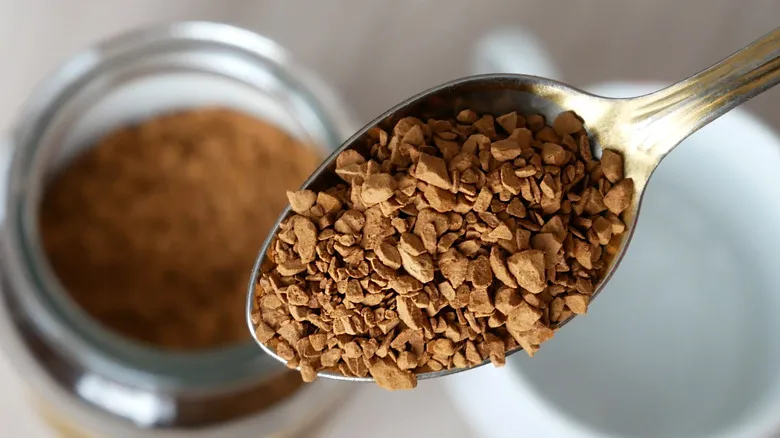What is instant coffee?
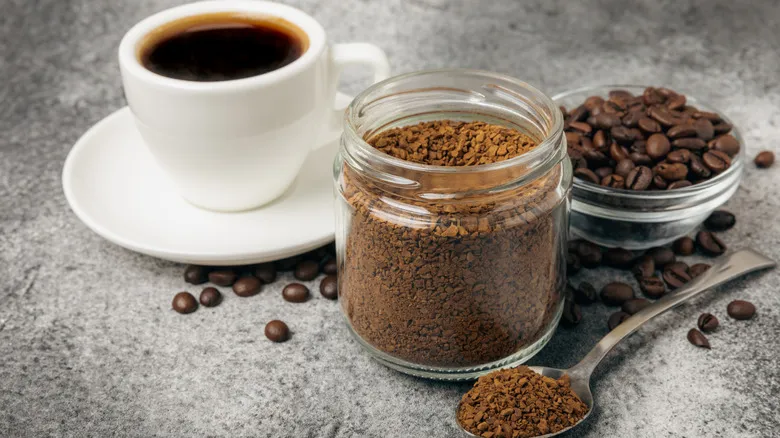
Instant coffee is a powdered form of coffee made by removing moisture from brewed coffee. This dehydration process can be achieved through two primary techniques: freeze-drying or spray-drying. By eliminating all liquid, the result is a concentrated, shelf-stable ingredient.
To prepare a typical hot coffee drink, just mix a small amount of the powder with hot water. The powder quickly dissolves, allowing you to enjoy a steaming cup of coffee in seconds. You can also personalize your drink by adding your favorite sweeteners or milk.
Most instant coffee products are made from robusta beans, which are generally less expensive than arabica beans, the two most prevalent coffee varieties in production. Robusta beans tend to have a more bitter and earthy taste, while arabica beans offer a smoother and sweeter flavor. If you prefer the milder and more balanced taste of arabica coffee, look for instant coffee labeled as 100% arabica.
Although the quality of the beans may be lower and the caffeine content less than that of freshly brewed coffee, instant coffee is a convenient option that eliminates the need for brewing equipment. Its strong flavor also makes it a versatile ingredient for various recipes, allowing you to enjoy the taste of coffee without the hassle of brewing more costly premium beans.
Instant coffee vs. instant espresso (and everything in between)
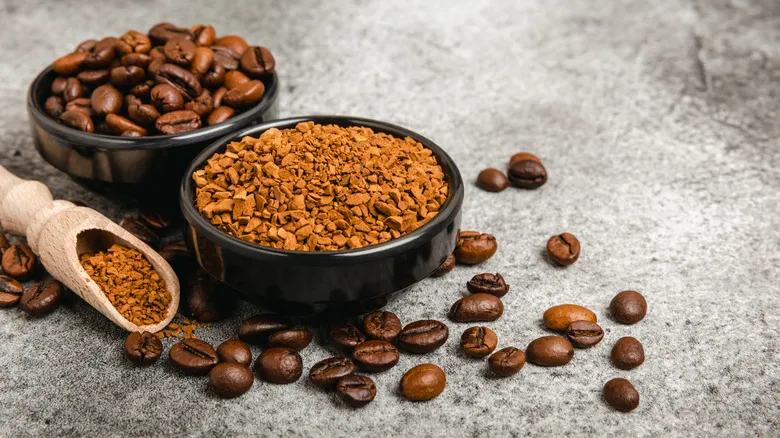
Just like regular coffee and espresso drinks, instant coffee is available in various roast levels and blends. The type of instant coffee you choose will affect the final taste—light roasts offer a delicate coffee flavor with fruity undertones, medium roasts provide a slightly stronger, caramelized taste, while dark roasts deliver a much bolder and more bitter profile. Instant espresso powder represents the darkest roast, boasting the most intense flavor and the highest caffeine concentration per serving compared to lighter roasts.
If you're looking to enhance your recipes without the caffeine, there are decaffeinated instant coffee options available. These also come in a variety of roasts, each with increasing flavor strength.
When using instant coffee for baking, it's best to avoid any pre-flavored varieties or those containing additional ingredients like dry milk powder. Opt for brands that list coffee as the sole ingredient to ensure that the final result of your baked goods isn't compromised by unwanted additives.
Should instant coffee always be dissolved before using?
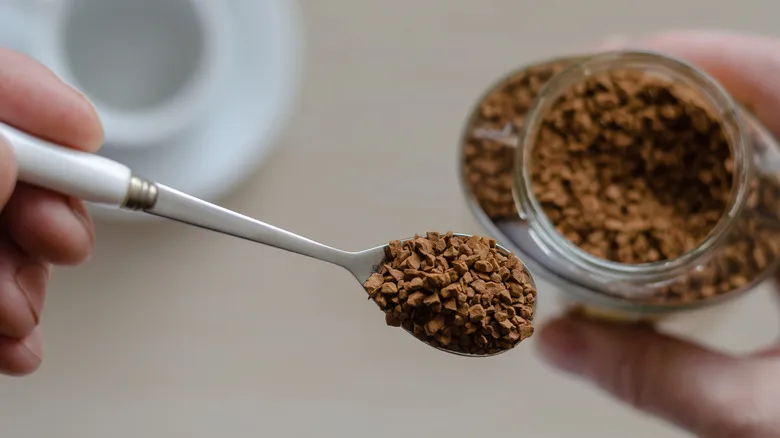
Depending on how you plan to use it in your recipe, instant coffee can be either dissolved in liquid or used in its dry form. Personally, I find that incorporating it into liquids is the method I rely on most in my baking. I’ve discovered that mixing the granules with liquid offers two key benefits: it helps to dilute and evenly distribute the granules, and it makes it easier to blend the dissolved coffee with other ingredients. This technique is similar to creating a slurry with water and cornstarch, as it prevents clumps of instant coffee from forming and ensures a smooth mixture. This dilution method is particularly useful when you need a larger quantity of plain coffee for a recipe or when working with batters, custards, and icings that contain more liquid.
While it may be tempting to take a shortcut by adding dry granules directly to a batter made with wheat flour, such as in cakes, muffins, or brownies, I advise against it. To achieve an even distribution and avoid concentrated clumps, you would need to mix the granules thoroughly, which can lead to excessive gluten development in desserts that should have a delicate crumb. In my experience, desserts turn out much tougher when I add dry granules directly, compared to when I first dissolve the coffee in water and incorporate that solution earlier in the mixing process. However, if you intend to use instant coffee in a dry application, such as blending it with dried spices, it can be used without dissolving.
What liquid should you use for dissolving?

Water is typically the optimal choice for mixing with instant coffee. If your recipe specifies plain coffee, opt for water instead of another liquid to prevent any conflicting flavors. Alternatively, you can mix instant coffee with a portion of a liquid already included in your recipe, such as milk or an extract.
Regarding the temperature of the liquid, you can use cold, room temperature, or hot liquids, but there are some important considerations! While the granules will dissolve in cold or room temperature liquids, the process will be slower, resulting in a milder flavor. I suggest using hot liquid, as it allows the granules to dissolve quickly and efficiently, leading to better flavor extraction. However, be cautious, as liquids that are too hot can extract overly bitter flavors. The key rule is to avoid letting your liquid reach the boiling point of 212 degrees Fahrenheit. For optimal brewing temperature, follow the guidelines from the Specialty Coffee Association of America, which recommends a range of 194 to 204 degrees Fahrenheit.
Unless your recipe states otherwise, let the hot liquid cool slightly after the granules have fully dissolved. This is crucial to prevent melting and ruining recipes with delicate structures, such as frosting or meringue. I learned this lesson the hard way when I added steaming coffee to a perfectly whipped vanilla bean buttercream intended for cupcakes, which caused the butter to melt and the frosting to curdle.
How much instant coffee should you use?
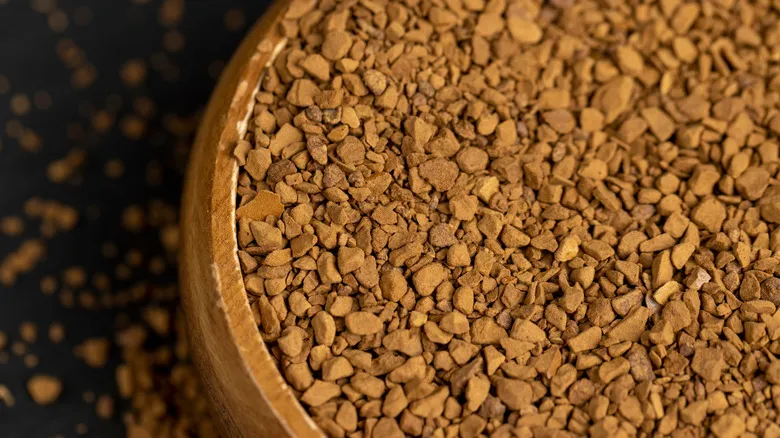
Because of its concentrated dehydrated form, you don't need much instant coffee to achieve your desired flavor. Typically, you should use no more than a tablespoon at a time. Most recipes will likely require just a teaspoon or two, and sometimes even just half a teaspoon, especially when working with darker, stronger roasts like espresso. For these, it's best to aim for a smaller quantity.
When experimenting, remember that the more instant coffee you add, the stronger and less diluted the flavor will be. I enjoy a bold coffee flavor in desserts where it should stand out, such as tiramisu, coffee ice cream, and anything with a strong mocha influence, which all benefit from a robust kick. However, I take a more delicate approach with lighter or simpler desserts that only need a hint of coffee flavor. Dishes like panna cotta, meringue, or basic shortbread cookies require a careful touch to maintain their intended simplicity.
If you're substituting instant coffee for freshly brewed coffee in a recipe, follow the recommended ratio of instant coffee to water provided by the brand you are using. Make sure to keep the total liquid amount consistent with your recipe — altering the liquid measurements can significantly impact the final result of your baked goods.
Elevate chocolate-flavored batters
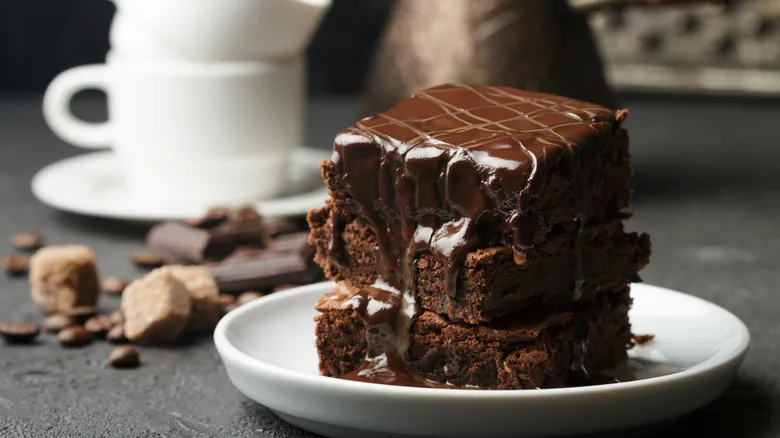
Instead of dominating the flavor profile, coffee beautifully complements the chocolate in desserts such as cakes, muffins, brownies, and cheesecakes, resulting in an indulgent treat. By following Ina Garten's method in her Beatty's chocolate cake recipe, incorporating a cup of hot coffee into the batter enriches the chocolate flavor and contributes to a moist texture. The result is a dessert that boasts a rich, pronounced chocolate taste without any overpowering coffee notes.
This technique can also be applied to boxed brownie or chocolate cake mixes. Simply substitute the water in the recipe with an equal amount of brewed coffee, adding it at the same stage as you would the water.
The type of chocolate or cocoa powder used in your recipe should guide your choice of instant coffee. If you're working with chocolate that has a cacao content of 80 to 90 percent, opting for a strong instant espresso powder may result in a flavor that is too intense. To achieve a better balance, consider using a lighter roast of instant coffee or a smaller quantity of espresso. For recipes that call for 100 percent unsweetened chocolate, I suggest omitting instant coffee altogether, as the unsweetened chocolate already provides the necessary depth and bitterness.
When it comes to cocoa powder, if you're using a natural cocoa powder with higher acidity and more complex fruity notes, a darker roast of coffee will pair nicely. In contrast, for alkalized Dutch-process cocoa powder, which has lower acidity, a more acidic lighter roast will create a harmonious balance.
Add it to cookie doughs
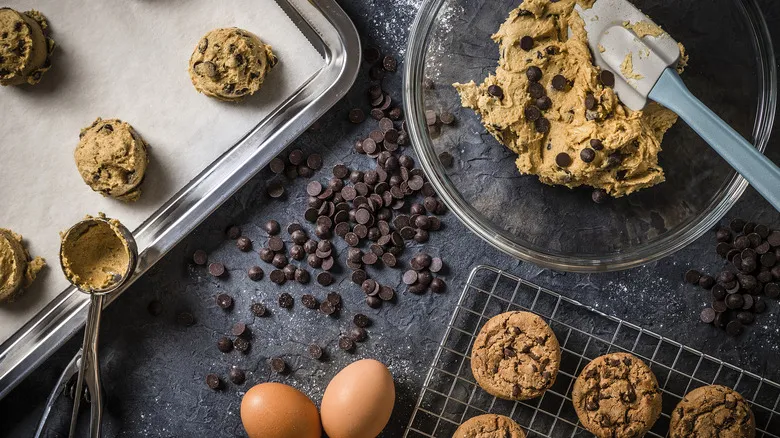
Elevate the energy and flavor of your next cookie batch by adding instant coffee granules to the dough. Since most cookie recipes require less liquid than batters for cakes and brownies, it's important to incorporate the granules in a way that ensures even distribution without adding too much moisture.
There are several simple methods to mix in the granules during the dough preparation. If your recipe calls for creaming white or brown sugar with butter at the start, you can combine the granules with the sugar before creaming. Alternatively, you can mix the granules with the flour and other dry ingredients before incorporating them into the wet mixture.
Looking to substitute instant coffee for an extract in your cookie recipe? In this case, adding a bit of water won't harm the dough, as you're merely swapping one liquid for another. If you're replacing an extract like vanilla or almond with instant coffee, mix it with a small amount of water to create a pourable slurry. For an even stronger aroma, consider using the original extract as the base for mixing in the instant coffee.
Treat it like a dry spice
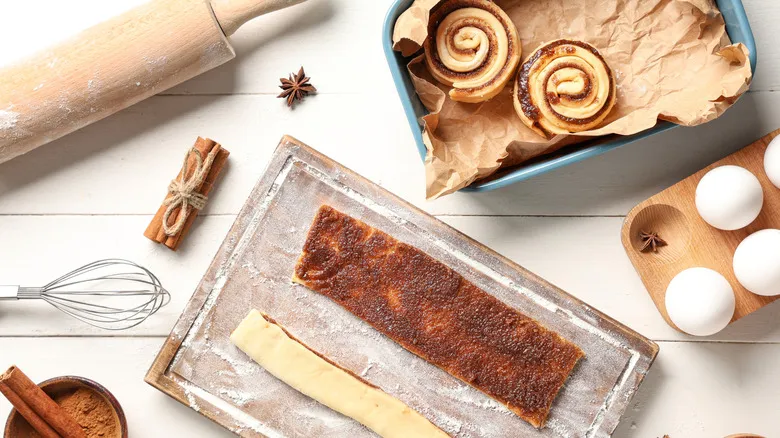
Create your own coffee-infused dry spice blend by mixing a few teaspoons of instant coffee with your preferred spice combinations. If you enjoy the pumpkin spice latte trend each year, incorporate instant coffee into any pumpkin spice mixture for your fall-inspired desserts like pumpkin bread, cake, or pie. It can also enhance a classic blend of cinnamon and white sugar, perfect for sprinkling on cinnamon rolls, coffee cakes, babkas, and other pastries. I particularly enjoy adding it to batches of sweet, spiced nuts or pumpkin seeds for a crunchy snack to serve at small gatherings.
Keep in mind that the size of instant coffee granules can differ between brands. If your instant coffee has larger granules, you might want to briefly pulse them in a food processor or coffee/spice grinder to create a finer, more uniform powder that blends well with your other spices. If you don’t have these appliances, you can place the granules in a resealable plastic bag and gently pound them with the flat side of a meat mallet.
Include as part of the finishing touch
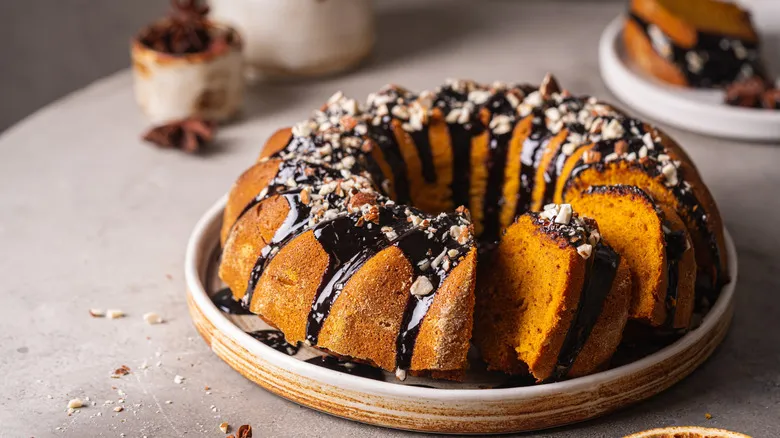
A glossy finish on a warm, freshly fried donut, a drizzle of rich chocolate ganache over a crunchy cookie, or a light, airy frosting enveloping a cake—these are just a few ways to elevate your desserts. Take advantage of instant coffee's remarkable ability to dissolve quickly by incorporating it into a smooth glaze, ganache, icing, or frosting. This technique is perfect for adding a subtle hint of coffee aroma and flavor, enhancing your dessert without overpowering it. It’s a delightful way to experiment with flavors and gives you the creative freedom to refresh classic baked goods. I often include quick breads in my baking repertoire and occasionally top my banana, pumpkin, or zucchini breads with a delicate coffee glaze, making for an ideal breakfast treat alongside steaming mugs of coffee.
The preparation is simple and straightforward, following a similar method for all variations: just dissolve dry instant coffee in a liquid before mixing it with the other ingredients. So delicious it deserves to be mentioned twice, instant coffee is also featured in the chocolate buttercream frosting used by Ina Garten in her Beatty's chocolate cake recipe. She dissolves one tablespoon of instant coffee in hot water and then adds it, along with melted chocolate, to a whipped buttercream base.
Recommended
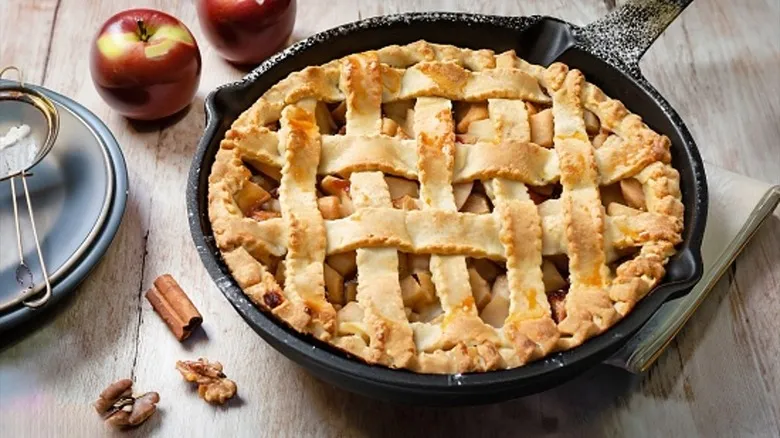
The Best Apple Variety To Use For Baked Goods
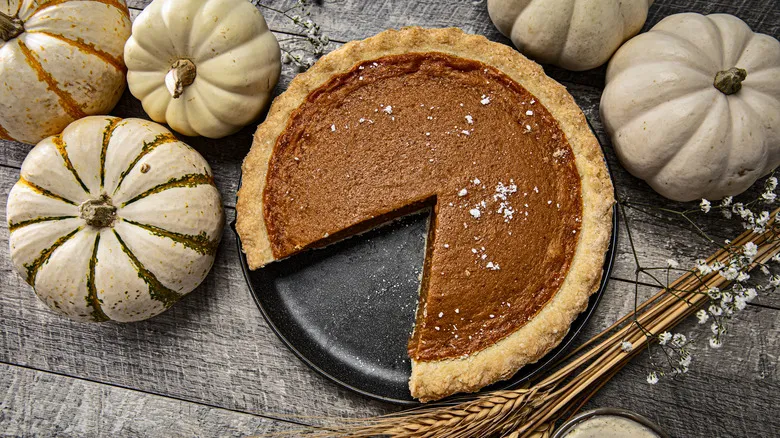
Take Grocery Store Pumpkin Pie To The Next Level With A Fluffy Topping

Alton Brown's Chef Tip For The Fudgiest Brownies? Bake Them Twice
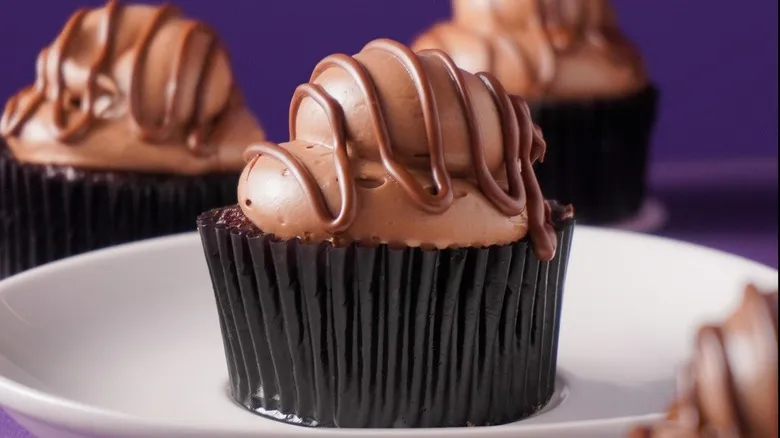
Edible Cupcake Wrappers Are The Playful Dish Perfect For Any Dessert
Next up

